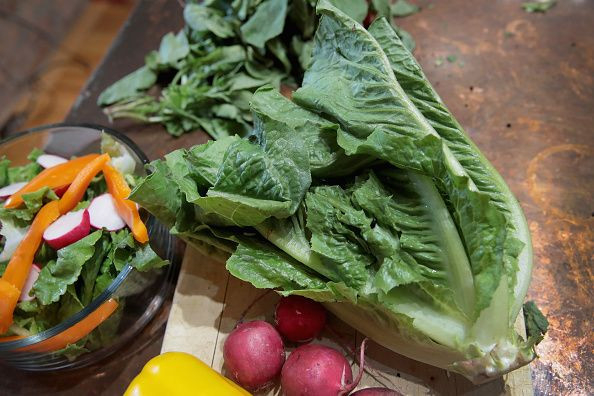E. Coli Outbreak Continues To Grow For Romaine Lettuce: 138 People Sickened By The Bacteria

Romaine lettuce continues to be a source for an E. coli outbreak, according to the Centers for Disease Control and Prevention (CDC). The agency has updated its previous report, saying that an additional 36 people have become ill from the contaminated romaine lettuce, bring the total number of consumers affected by the E. coli contamination to 138.
The outbreak extends to 25 states and started on Sept. 20, 2019. A total of 72 people have been hospitalized from the E. coli bacteria, with 13 people suffering from a form of kidney failure. No deaths have been reported at this point, the CDC said.
The CDC has linked the contaminated romaine lettuce back to the Salinas, California, growing region, which it said is likely the source of the outbreak. The E. coli contamination is the same strain of the E. coli bacteria that caused a leafy greens outbreak in 2017 and a romaine lettuce outbreak in 2018, according to the agency.
Consumers are urged not to consume romaine lettuce grown in Salinas. They should throw the affected romaine lettuce product away. Retailers should not sell romaine lettuce from the area as well.
In addition, consumers should wash and sanitize all drawer sand shelves in refrigerators where the romaine lettuce was stored. Consumers should also check the label of the romaine lettuce that they intend to buy to ensure it is not from the Salinas growing region.
The CDC said all use-by dates and brands of romaine lettuce from the region should be avoided, including whole heads of romaine, organic romaine, hearts of romaine, romaine in salad wraps, and packages of precut lettuce and salad mixes which contain romaine.
E. coli symptoms can include severe stomach cramps, diarrhea, which is often bloody, and vomiting that usually lasts five to seven days. In some instances, individuals infected with E. coli can develop a form of kidney failure known as hemolytic uremic syndrome.
The CDC said it will provide more information to the public as it becomes available.
© Copyright IBTimes 2025. All rights reserved.





















